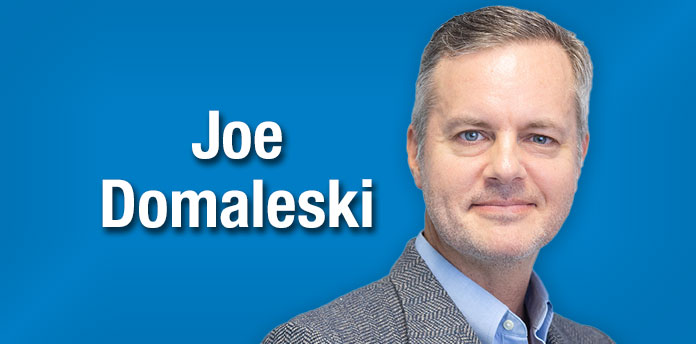Keeping up with everything I need to do is a never-ending struggle, and I’m sure I’m not alone in this regard. There’s no doubt that technology has improved the tools for managing tasks and staying organized. However, there’s a downside to all this technology—it has created more inboxes and ways for tasks and to-do’s to fall into my lap. You know what I mean?
Being an effective leader requires staying organized and productive. A leader’s own organizational skills and ability to manage tasks directly impact their team’s success. A personal productivity methodology is essential for leaders to maintain focus, manage time effectively, and prioritize responsibilities. By implementing a productivity system, a leader can streamline workflows, make informed decisions, and ensure their actions align with strategic objectives. A structured methodology allows leaders to optimize productivity, minimize distractions, and dedicate time and energy to high-value tasks that drive results.
When I started my business 20 years ago, I researched different productivity methodologies and systems used by entrepreneurs and business leaders. At the time, the Getting Things Done® (GTD) methodology really resonated with me. Developed by productivity expert David Allen, GTD provides a comprehensive framework for organizing tasks, managing priorities, and achieving a state of “mind like water.” It’s a simple, yet powerful system. While GTD works well with software tools, it is equally effective with a paper-based system. I read Allen’s book “Getting Things Done,” and it opened my eyes to some subtle but powerful ways to stay organized. The GTD methodology has aged well over the years and I still use it. What follows is not a commercial for GTD but simply an overview of what it is and how I use it.
At its core, GTD is centered around five key actions: capturing, clarifying, organizing, reflecting, and engaging with our commitments and responsibilities.
The main idea behind GTD is to free up mental space by externalizing and processing all our tasks, thereby enabling us to focus on execution rather than mental clutter. Key principles of GTD in more detail:
Capture Everything: The first step to achieving a clear mind is to capture every task, idea, and commitment into a trusted system. This can be done using a physical notebook, a digital tool, or a combination of both. By capturing everything, we prevent mental leakage and ensure that no valuable thoughts or tasks slip through the cracks. Personally, I use an app called “Things 3,” which works seamlessly across my iPhone, iPad, Apple Watch, and Mac computer. I can capture tasks from anywhere, and they automatically sync across all my devices. It’s fascinating to tell my watch to remember something and then see it appear on my computer later.
Clarify and Organize: Once tasks are captured, the next step is to clarify their nature and determine the desired outcome. Each task should be processed to determine if it requires immediate action, delegation, deferral, or elimination. Clarifying tasks helps prevent getting overwhelmed and provides clarity on what needs to be done. Once clarified, tasks are organized based on their context, priority, and deadlines. Personally, I go through my inboxed tasks once a day to ensure they are appropriately clarified and organized.
Use an Organizational System: Establishing a reliable organizational system is paramount to GTD’s success. This system may consist of project lists, next-action lists, reference files, and calendars. By having a structured system in place, we can easily access and prioritize our tasks, ensuring that we’re always working on the most important and relevant tasks at any given time. For work organization, my team and I use an online tool called Basecamp, which not only helps us stay organized but also enables seamless collaboration with clients. Personally, I rely on Apple Notes and Apple Calendar, which is integrated into all my devices. My wife and I even use Apple Notes for shared grocery lists, which keeps things efficient and synchronized.

Regular Review and Reflection: GTD emphasizes the importance of periodic reviews to reassess our commitments, projects, and priorities. Regularly reviewing our tasks and goals enables us to make informed decisions about what requires our attention and what can be deferred or eliminated. Reflection helps maintain a clear perspective on our responsibilities and ensures that we’re aligning our actions with our long-term objectives. Personally, I dedicate Sunday evenings to a weekly review and planning session, where I lay out the week ahead and beyond, ensuring I have a clear roadmap for success.
Benefits of a Good Personal Productivity System:
- Enhances Focus and Reduced Stress: A good system, such as GTD, allows us to externalize and organize our thoughts, freeing up mental space for focused action. By knowing exactly what needs to be done and when, we can eliminate the mental clutter that leads to stress and distraction, enabling us to work with greater clarity and purpose.
- Improves Efficiency: With a reliable organizational system in place, we can easily locate and prioritize tasks, making it easier to complete them efficiently. A system like the GTD I use helps us identify the next actionable steps for each task, eliminating decision paralysis and enabling us to make consistent progress.
- Increases Agility: A good methodology equips us with the flexibility to adapt to changing circumstances. By regularly reviewing and reassessing our commitments, we can quickly adjust our priorities and reallocate resources as needed, allowing us to navigate unexpected challenges and seize new opportunities.
- Heightens Creativity and Innovation: When our minds are clear and unburdened, we can tap into our creative potential and generate innovative ideas. Time-tested systems like GTD enable us to focus on important tasks and projects, freeing up mental capacity for creative thinking and problem-solving.
- Inspires Others: Systems like GTD can inspire others by demonstrating the tangible benefits and positive impact of an effective personal productivity system. Although I’m by no means perfect, I do like to hear when someone says, “Joe, you’re a busy person but somehow you seem to get everything done.” While that’s not entirely true, I do strive to be helpful and productive.
Busy times call for powerful tools and system. A system like GTD is a potent tool for enhancing personal productivity in both professional and personal pursuits. Personally, GTD has helped me increase focus, reduce stress, and improve efficiency. Regardless of the system you choose, having an organized and task-focused system is important. Being an organized leader who gets things done not only empowers you to achieve your personal goals but also enables you to inspire and uplift your team and others on their own paths to success. What system do you use to stay organized and productive?
[Joe Domaleski, a Fayette County resident for 25 years, is the owner of Country Fried Creative – an award-winning digital marketing agency located in Peachtree City. His company was the Fayette Chamber’s 2021 Small Business of the Year. Joe is a husband, father of three grown children, and proud Army veteran. He has an MBA from Georgia State University and enjoys sharing his perspectives drawing from thirty years of business leadership experience. ]









Leave a Comment
You must be logged in to post a comment.